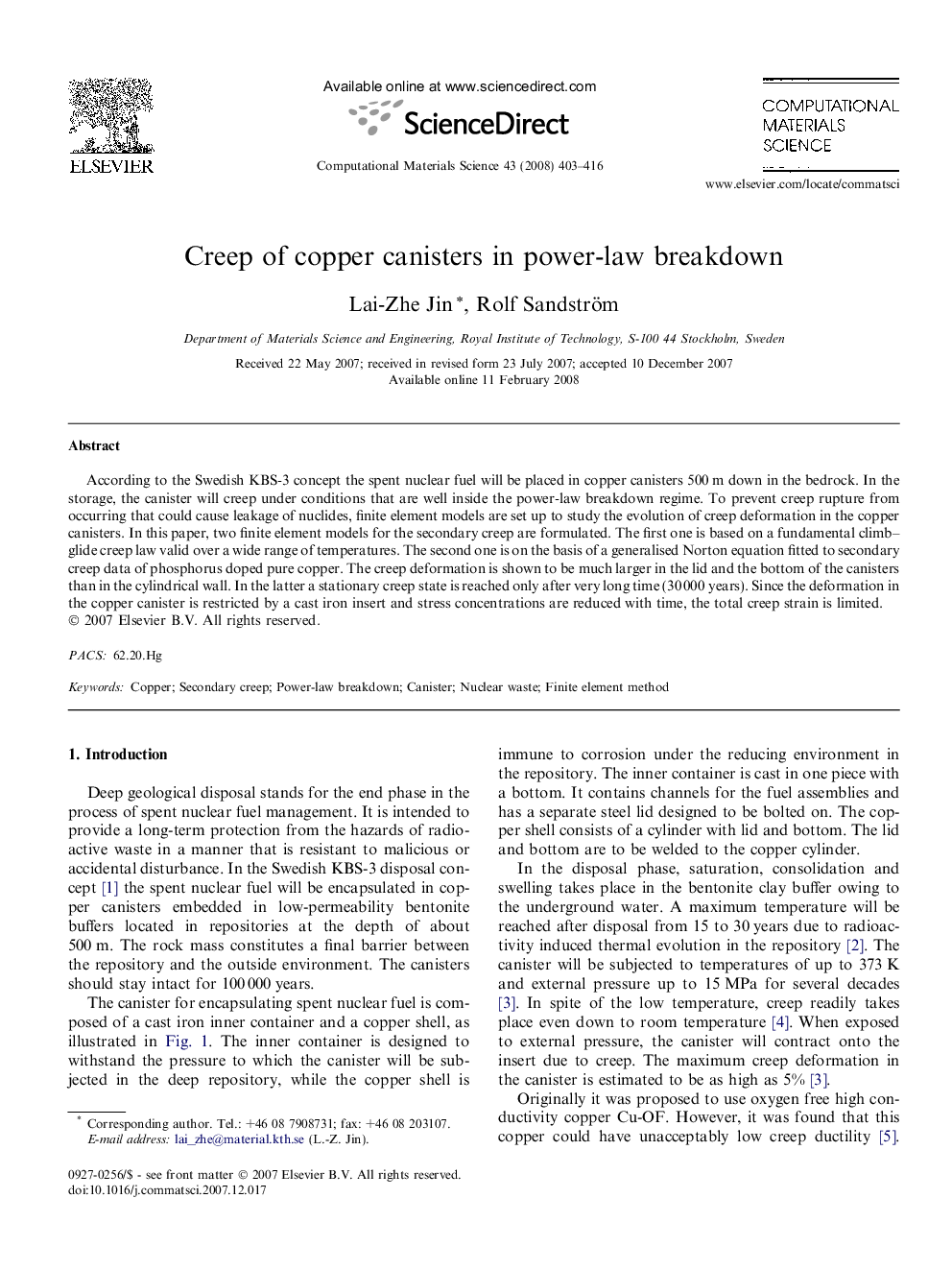| Article ID | Journal | Published Year | Pages | File Type |
|---|---|---|---|---|
| 1563444 | Computational Materials Science | 2008 | 14 Pages |
According to the Swedish KBS-3 concept the spent nuclear fuel will be placed in copper canisters 500 m down in the bedrock. In the storage, the canister will creep under conditions that are well inside the power-law breakdown regime. To prevent creep rupture from occurring that could cause leakage of nuclides, finite element models are set up to study the evolution of creep deformation in the copper canisters. In this paper, two finite element models for the secondary creep are formulated. The first one is based on a fundamental climb–glide creep law valid over a wide range of temperatures. The second one is on the basis of a generalised Norton equation fitted to secondary creep data of phosphorus doped pure copper. The creep deformation is shown to be much larger in the lid and the bottom of the canisters than in the cylindrical wall. In the latter a stationary creep state is reached only after very long time (30 000 years). Since the deformation in the copper canister is restricted by a cast iron insert and stress concentrations are reduced with time, the total creep strain is limited.
